Want to know why your car insurance premium has doubled in the past two years? Could the apparently bizarre and wasteful way that car insurers pay claims have something to do with it?
Guardian Money recently asked readers to describe their experience after they had been involved in minor prangs, and the responses – and the figures quoted – are astonishing.
We did so after a reader reported how a £350 minor bump had somehow morphed into an insurer payout of £4,500.
It now appears this was anything but a one-off. We have seen examples of how accident claims management companies are routinely charging £5,000 to provide replacement cars to victims of accidents. We have been told about repairs that it seems should have cost £1,500 to fix but have actually resulted in £15,000 insurance payouts.
We were contacted by someone who works at an “approved” accident centre who has described how minor bumper repairs are inflated from £1,500 to £7,500 by adding unnecessary painting and other unneeded work – all because the work is being paid by an insurer.

The Association of British Insurers says claims bills rose 8% over the past year to reach a record average of £4,800.
The letters suggest that this over-paying and excessive charging has become the norm across an industry that appears to have lost control of claims.
Arguably worst of all, from an environmental perspective, perfectly good cars are being unnecessarily written off on the say-so of insurers that have not examined the car.
Over the same period premiums rose 33% to an average £635
Anyone who was already cross about their car premium increase – and who already has high blood pressure – should probably look away now.
Minor scrapes, huge bills
Perhaps two of the most ridiculous cases we were sent came from readers BB and LD. BB had a very minor collision with another car in a car park. The Škoda he hit was left with a tiny crack on the front bumper. It was dealt with by the other driver’s insurer. The final bill, which is now on BB’s claims history and has forced up BB’s premium massively, was £7,000.
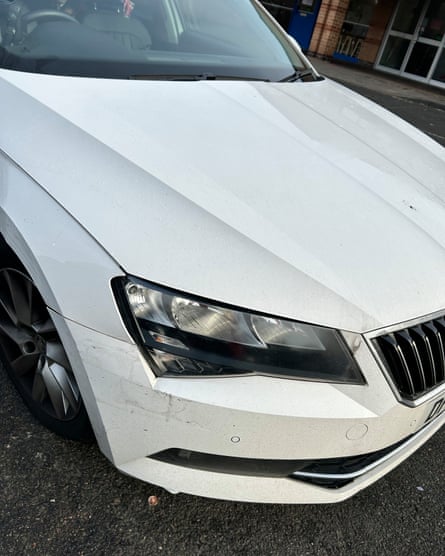
Meanwhile, LD ran into the back of another Škoda, causing enough damage to require a new bumper but no other work. The final repair bill was a shade under £5,000.
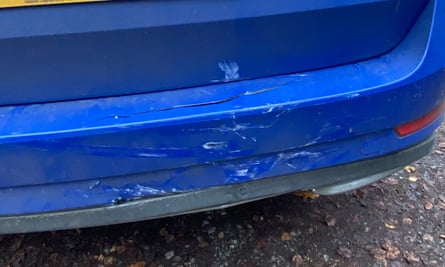
JT, who runs his own franchised car dealer, says he was astonished by the final bill after his wife bumped into her brother’s Audi A3, leaving a mark on the rear bumper and no other damage. “We offered to repair his car and lend him a replacement but his broker advised against this, and instead referred him to an accident management company. Our repairs would have been £1,500. The final bill to the insurer was actually £15,000. This included 11 days’ car hire at £380 a day – a ridiculous figure as even £80 would be high,” he wrote.
“His car could have been used until the parts were available, and the repair only took two days. I asked my insurance company to contest the costs but got a very minor reduction.”
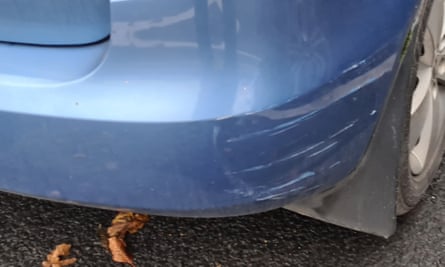
Reader BH’s insurer paid out £2,750 for a minor scuff to the side of the rear bumper to another driver’s car.
“The owner had been quoted £200 from a local garage to fully repair it, but their insurer’s claims management company took it upon themselves to remedy the claim providing a replacement car while the repairs were carried out at a massively inflated amount. A brand new bumper with the same factory colour for the car in question was about £300 with a fitting time of less than an hour. It felt like a massive scam,” he says.
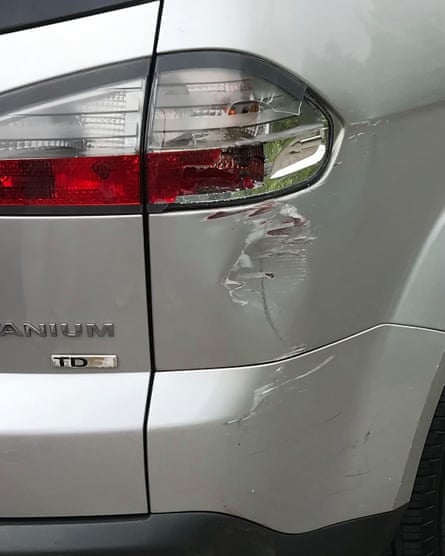
In KW’s case, the repair costs did not seem unreasonable – £2,872 to fix the damage caused to his silver 2008 Ford S-Max after a neighbour reversed into his car more than two years ago. However, the final payout was £7,372. “I foolishly decided to do things by the book and contacted my insurer, which gave me the option of making a no-fault claim with it in which case I would pay the excess, or I could go through a claims management company and pay no excess.”
He opted for the latter, which added a hire car at £128 a day for 35 days, adding up to a rental charge of £4,506. “Unsurprisingly the other party’s insurers contested the claim and it all ended up going to court around two years later. Luckily I had signed an indemnity but it all felt like some sort of game between the insurers and clearly it was a good earner for all involved.”
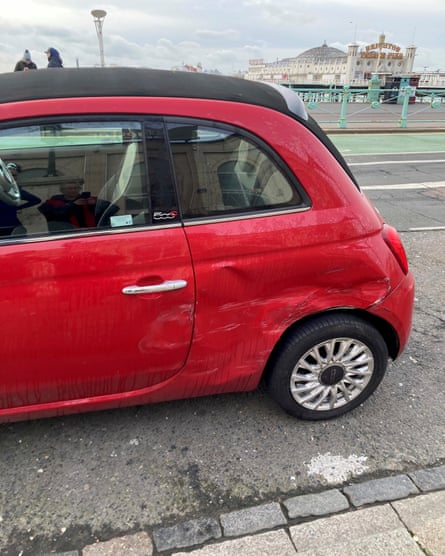
When a car drove into JA’s red Fiat 500 it caused some significant damage to the rear of the car that arguably justified the £5,550 repair bill. However, even though JA had not asked for a hire car, she was supplied one at a cost of almost £4,800 to the other driver’s insurer – paid for by all its policyholders. The final total bill was £10,300, far more than the car was worth.
Write-offs
Readers have also told how their cars were written off apparently unnecessarily. IV described his daughter’s experience after she had a minor brush with a bus in her Fiat 500. Rather than examine the car or listen to the family’s pleas that the car could be repaired, the insurer wrote off the car, paying out close to £6,000.
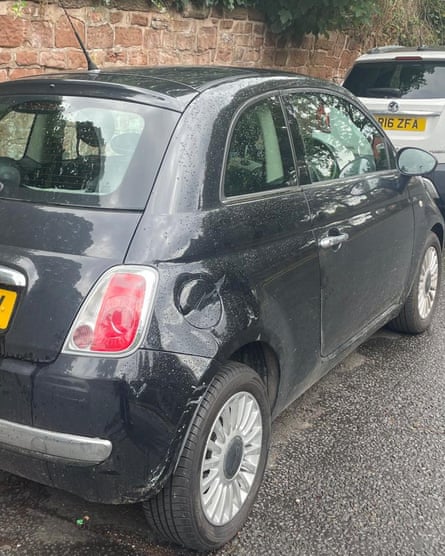
“When we contacted a local repairs specialist, they quoted £600-£700 to repair the car, which we forwarded to the insurer. But they were adamant to write it off, without it once being inspected by them or a nominated garage. They refused to sell us the car, to allow us to repair it. When the salvage company came to take it away, they were in disbelief that it had been written off. It seems some insurers would rather just write off a car than have the hassle of organising a repair and courtesy car.”
DG’s car was written off when a road worker did minor damage to the rear wheel arch. The insurer paid out £4,820 for the car, which was recorded as a category N write-off (which means it had no structural damage and can be repaired). He took the money, was able to buy the car back from the insurer for £626 and had it repaired for £300.
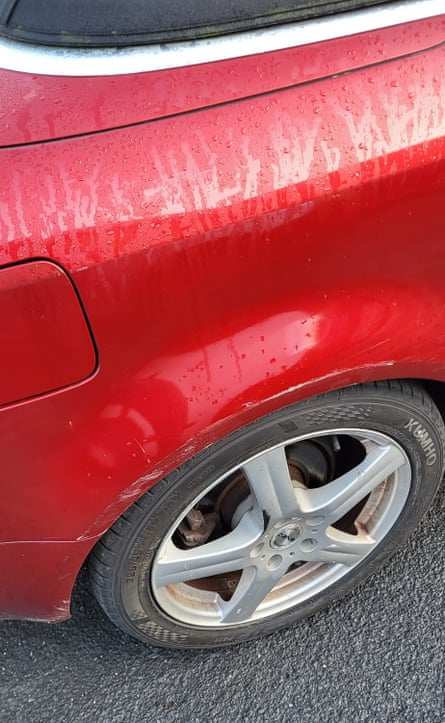
Another insurer recently decided to write off an Audi that had suffered a minor scrape and paid out £1,600 on the basis that the repair cost exceeded the car’s value.
Claims management firms
If you are unlucky enough to drive into a black cab, causing a minimal amount of damage – for example, £1,500 worth – the final insurance bill could easily top £50,000, according to one insurance insider who works in motor claims.
That’s if the owner uses one of the unregulated accident management firms that, the insurance insider claims, solely exist to take on claims from drivers who have been driven into, and to “make as much money out of them as they can”.
They advertise themselves to people who have been told that they don’t have to tell their insurer they have been involved in an accident (you do) or that they won’t have to pay their policy’s excess. The promise is that they will provide you with a like-for like or better hire car while they repair yours – all done on what is called a credit hire basis.
These firms manage the claim entirely, managing the repair, and presenting the final bill to the other driver’s insurer.
The insider says that once an accident management firm signs up the owner they supply a replacement vehicle at up to £600 a day and then drag the repairs out for as long as possible to maximise the hire charge.
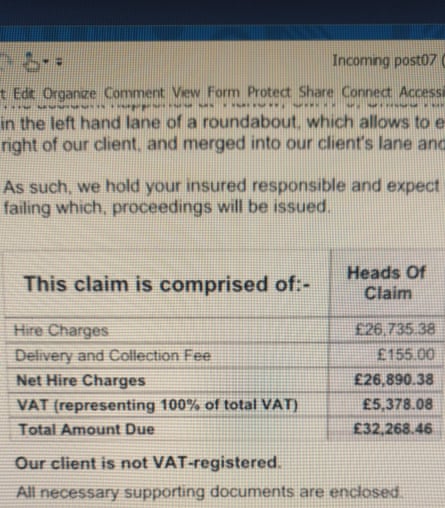
Bills seen by Guardian Money for replacement cars include one or £32,000 – for an 86-day car hire – and another for £22,500.
“Repairs are credit repairs, and cost 25% more than insurer repairs, and double the rate charged by small garages. If we dispute these charges the firms just issue proceedings, so it is often cheaper just to pay them,” she says.
Insurers will often push claimants towards their own accident management firm.
Reader JD’s letter is an interesting insight into this world.
“When I recently made a no-fault claim, I was passed directly to an accident management company, rather than the insurer. They insisted I take out a hire car even though I told them I didn’t need one. The hire car rates were exorbitant and I didn’t want to end up paying them if the other party’s insurer refused to pay. They finally explained that they couldn’t repair my car if I didn’t sign up. The whole experience felt like a scam,” she wrote.
What the insurers say
An Association of British Insurers spokesperson told Guardian Money: “There are a variety of factors driving the increase in the cost of repairs. Cars are much more advanced than they once were with more sophisticated technology. This, and the diagnostic tools and recalibrations required, makes repairs more expensive. Skills gaps and labour shortages are adding pressure to the repair network and delaying the amount of time it takes to fix a vehicle.
“Beyond repairs, claims may also include payments to others involved in the incident or any damage to property. The largest element of a claim can be for personal injuries – which could run into the tens of millions.
“Since the previous peak at the end of 2017, motor insurance premiums have increased 1.3%, in real terms, whereas claims costs have risen by 23% in the same time period. 2023 was a difficult year for motor insurers as they continue to absorb costs rises, with EY estimating that for every £1 collected in premiums, the industry paid out £1.14 in claims and expenses.
“The industry remains committed to taking action and we have recently announced a roadmap to tackle insurance costs, including a combination of actions that industry, government or regulators could initiate or improve.”
Source: theguardian.com


















